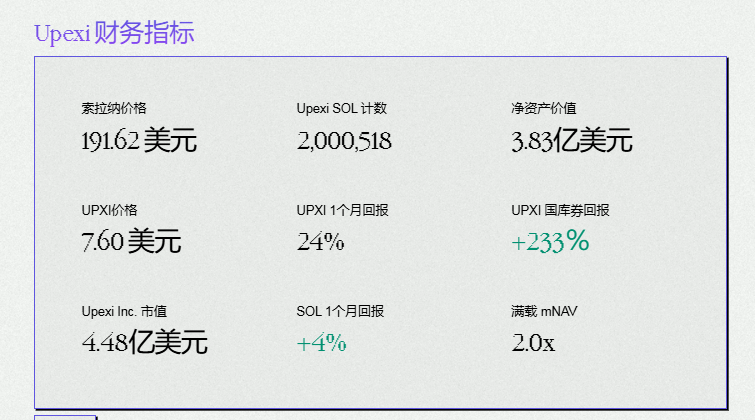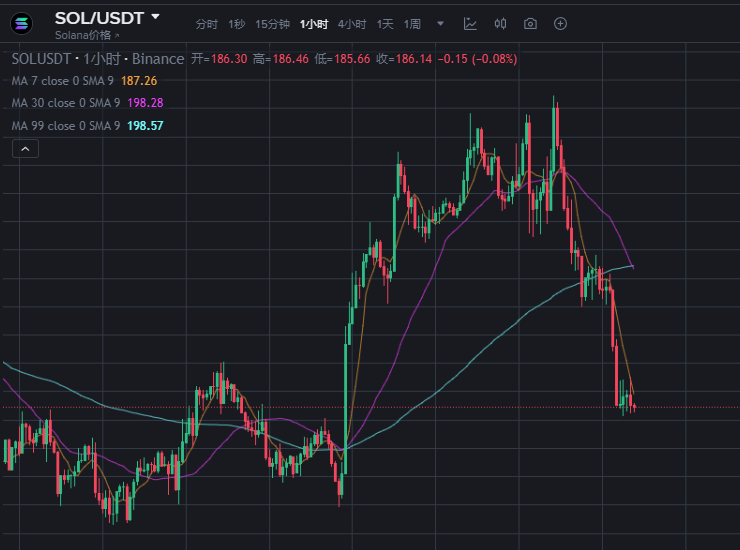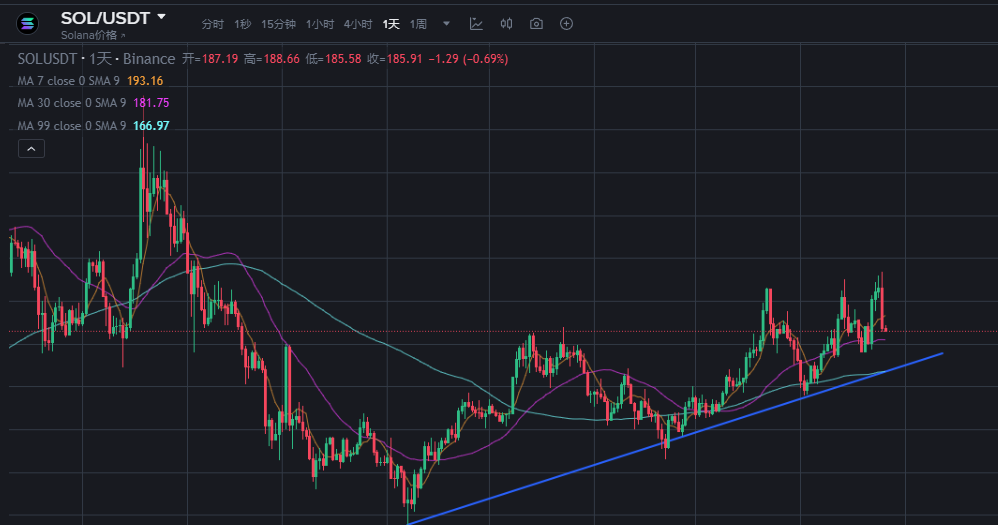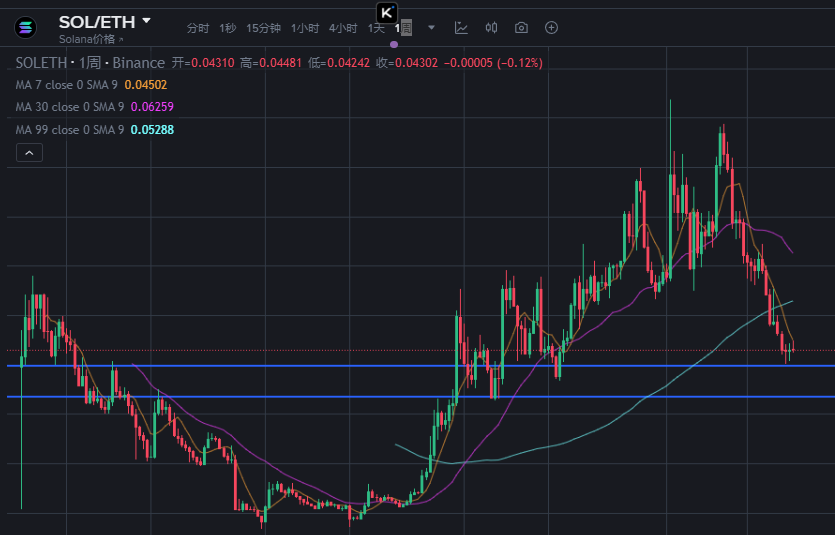$1 Billion Bet on Solana: Is This Downturn a Golden Buying Opportunity?
Institutional Giants Place $1 Billion Bet on SOL: Massive Treasury and Opportunities Amid Market Downturn

Bloomberg reports that Galaxy Digital, Jump Crypto, and Multicoin Capital—three leading institutions—are advancing a $1 billion fundraising initiative exclusively to acquire Solana (SOL) tokens and establish the world’s largest dedicated Solana treasury.
The group has enlisted Wall Street investment bank Cantor Fitzgerald as lead underwriter and plans to build a centralized digital asset reserve vehicle by acquiring a yet-unnamed publicly traded company. If the transaction closes on schedule in early September, this treasury will surpass the current largest Solana reserve pool by more than double.
The Big Three’s SOL Ambitions: Reshaping Institutional Crypto Reserve Models
All institutions involved in forming the treasury have deep roots supporting the Solana ecosystem.
Last year, Galaxy Digital led a $600 million-plus acquisition of Solana from the FTX estate;
Jump Crypto is developing “Firedancer,” a next-generation Solana validator client aimed at boosting the network’s transaction throughput;
Multicoin Capital is an early institutional investor in Solana, its portfolio tightly intertwined with the ecosystem’s trajectory. This level of commitment has made the $1 billion plan an emphatic industry endorsement of Solana’s long-term value.
A Paradigm Shift in Reserve Strategies
This initiative signals an evolution of the “corporate crypto reserve” playbook—from focusing on Bitcoin and Ethereum to strategic accumulation of public chain assets.
Inspired by Michael Saylor’s MicroStrategy Bitcoin strategy, using public companies to amass digital assets has become a fresh wave in institutional crypto allocation this year.
Earlier iterations of this approach for Bitcoin and Ethereum fueled significant price rallies—Ethereum-focused Digital Asset Treasury (DAT) firms now hold approximately $20 billion in ETH, a key factor in last week’s new all-time high.

Presently, Solana’s largest public holder is supply chain firm Upexi, which owns around $380 million in SOL (over 2 million tokens).

This record is about to be broken: in addition to the Big Three’s plan, DeFi Development Company (DDC, formerly Janover) has pivoted under a former Kraken executive to become a Solana reserve entity. Its stock soared tenfold in April, and it has filed with the SEC for a $1 billion raise to buy more SOL.
Another player, Sol Strategies, has also designated Solana as its core reserve, forming a “MicroStrategy of Solana” cohort within the industry.
SOL in a Market Chill: Technical and Fundamental Disconnect
Whipsaw Price Action

While institutions are building positions, Solana’s market performance has turned highly volatile.
In the past two days, SOL’s price plunged from a high of $213 to near $187—a drop of nearly 12%—wiping out nearly all gains from “Powell Night” and retesting the key $170–$180 support zone.
Technical charts show the SOL/USD pair forming a descending channel on the hourly chart. A breakdown below $172 could open further downside to $162 or even $150. Market sentiment has swung from “greed” to “fear,” with the Crypto Fear & Greed Index dropping from above 70 to 44, a low not seen since June.
Technical Setups at Play

Despite short-term pressure, the medium-to-long-term technical structure points to potential upside. Since April, SOL has formed an “ascending triangle” on the weekly chart, with horizontal resistance at $200 and an uptrend line around $176.
If the daily close can break above $200 with strong volume, it could ignite a rally targeting $220–$260, and in a bullish scenario, as high as $362.
Analyst Crypto Jelle highlights that SOL is “quietly printing higher lows.” He notes, “Once $200 is cleared, the rally train will be hard to stop.”
Ecosystem Resilience Driving Underlying Value
Solana’s fundamentals are steadily improving. Ecosystem DEXs continue to lead public chains in trading volumes, while increased protocol buybacks show growing project team confidence.
Last week, meme coin platform Pump.fun generated nearly 90% of Solana’s Launchpad revenue, underscoring its leading role as a speculative token chain. The upcoming Alpenglow upgrade is poised to further boost network performance and could act as a catalyst for future price discovery.
SOL/ETH Ratio Nears Historical Lows: 0.04 Support in Focus

The SOL/ETH exchange rate is sending another crucial signal. It’s dropped from a high of 0.089 to about 0.042—approaching the 0.04 historical support zone. This level has sparked strong SOL rebounds against ETH several times before, and may offer another strategic entry opportunity now.
If institutional reserves materialize, spot supply of SOL will become more constrained, strengthening its relative performance.
Institutional Hoarding: Opportunity and Risk in the Balance
Liquidity Drain Effect
The creation of a $1 billion SOL treasury will directly tighten circulating supply. At current prices, the plan equates to locking up about 5.3 million SOL—over 1% of total supply. Such a large-scale lock-up could trigger a liquidity drain similar to Ethereum DATs: when ETH treasuries reached 3% of circulating supply, prices surged to new highs as supply was squeezed.
Systemic Risk Overhang
Galaxy CEO Michael Novogratz cautions that the crypto reserve boom may have peaked, putting new entrants at greater risk. Any sustained market downturn could trigger cascading forced liquidations, especially if SOL used as collateral faces margin calls. Hong Kong’s Monetary Authority will soon enforce Basel crypto capital rules requiring banks to assign a 1250% risk weight for unpermissioned blockchain asset exposures, further curbing traditional financial institutions’ willingness to allocate capital to crypto.
Strategic Decisions at a Critical Juncture
The $1 billion institutional treasury proposal stands in stark contrast to SOL’s recent price plunge.
For savvy investors, this drop may present a tactical buying window. As Solana Foundation-backed treasuries soak up spot supply, DEX trading volumes continue to lead the public chain space, and the SOL/ETH ratio approaches long-term support, the market may be transforming “fear” into “opportunity.”
Nevertheless, investors should remain alert to the inherent volatility: a breakdown below $170 would break the uptrend structure and could send prices down to $150.
As institutional capital reshapes the crypto landscape, Solana is at the forefront of a liquidity revolution. The $1 billion treasury is both a powerful signal of confidence and a harbinger of structural change; as circulating supply is increasingly locked up in institutional vaults, Solana’s ecosystem could see a steeper recovery curve.
Disclaimer:
- This article is reprinted from [MarsBit], with copyright retained by the original author [White55, Mars Finance]. For republication concerns, please contact the Gate Learn team for prompt resolution per established guidelines.
- Disclaimer: All statements and opinions in this article reflect only the author’s views and do not constitute investment advice.
- Other language versions have been translated by Gate Learn. Unless Gate is specifically mentioned, do not copy, distribute, or plagiarize the translated content.
Related Articles

How To Claim The Jupiter Airdrop: A Step-By-Step Guide

Solana Staking Simplified: A Complete Guide to SOL Staking

Introduction to Raydium

Complete Guide to Buying Meme Coins on the Solana Blockchain

Solana, Sui, Aptos: Potential Ethereum Killers - A Review of their Performance in 2024
